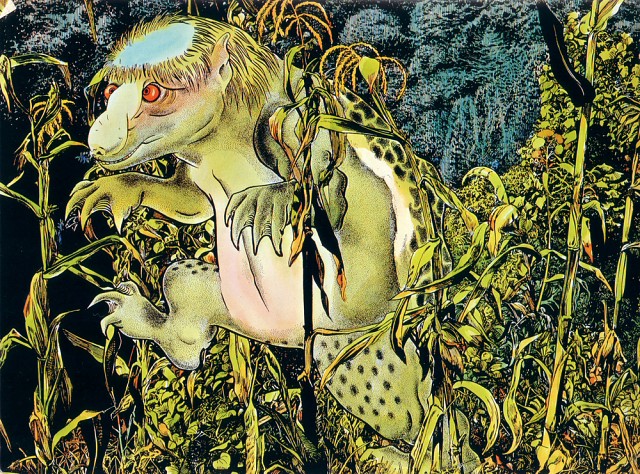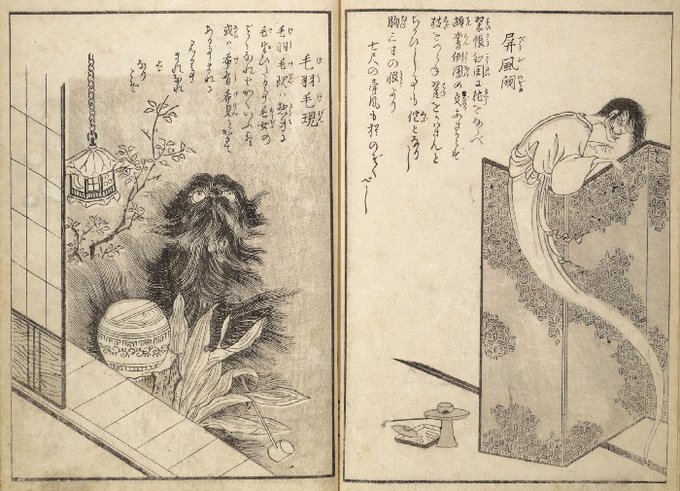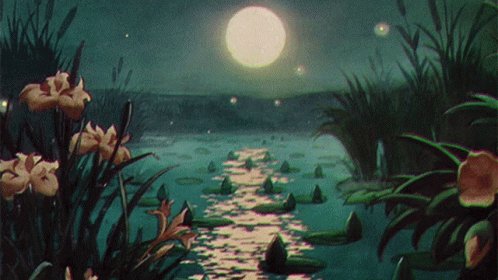LoreThursdayのTwitterイラスト検索結果。 4,440 件中 13ページ目
Walpurgisnacht traditionally marks the old feast day of Saint Walpurga, one of the first literate evangelical nuns active in Frankish Germany. Pagans observe it as the night before Beltane (May 1), the beginning of Summer, a time of freedom, fertility and hope.
#FolkloreThursday
The appearance of the Devil changes with time and place in folklore, drawing on social anxieties, even xenophobia, at times. While some British folktales have a dandy Devil taking innocents to a wrestling match, others present an inhuman black shape. #FolkloreThursday
In Slavic folklore butterflies were thought to be the visible soul of a witch. If the butterfly flew into the mouth of a sleeping human it was thought the witch had possessed them. #FolkloreThursday
Ventolines, gráciles espíritus etéreos de las costas del mar cantábrico. Representan los buenos vientos y son benévolos: https://t.co/e3KpCce5Zi
#FolkloreThursday
Diseño original de Gustavo Cotera.
A trickster in the folklore of Ireland, is the gean-cánach (love talker). A male faerie similar to a leprechaun, known for seducing men and women, although he is particularly fond of shepherds and milkmaids
#folklorethursday #irishfolklore
art: Maximilian Pirner
From the 'Myths in Isolation' book project on world folklore, by Katherine Soutar, contemporary English artist and illustrator #WomensArt #FolkloreThursday
In the indigenous fables of Sarawak (i.e. Iban, Kelabit, Malay, Melanau, Orang Ulu), the mouse deer was known as a trickster. He is always too smart for his own good, and thus, has the tendency to be cunning and deceitful most of the time. #SarawakFolklore #FolkloreThursday
#folklorethursday
LEPRECHAUN🇮🇪
..tales of Ireland's trickster fairies, first emerged in the 8th Century. Famous for being cobblers "leath brogan"..the shoemaker..earns them, their pots of gold, at the end of the rainbow.." 👞🌈
Lovers for now and ever
#Valkyrie #originalcharacter #AuroraBorealis #FolkloreThursday
According to Scottish #legend, the Faerie Dog (or Coin-Sith) is a green hound & silent hunter, searching for souls. Nursing women specifically, for they would be abducted & taken to the faerie realm,forced to eternally supply milk for the fae!#FolkloreThursday #LegendaryWednesday
This #FolkloreThursday, let’s spare a thought for the hare that raced ahead at an unsustainable pace, but recognised when it was to time to stop for a nap. 💤
Been there, hare, been there…
🖼 Library of Congress Aesop Fables
Metallurgy was independently discovered multiple times in Eurasia-Africa, with evidence suggesting bronze and iron smelting in Nigeria developed separate from the Middle East, China, or India. This may explain the prominence of gods like Ogun. #FolkloreThursday
🖼: I. PIckering
We're honoured that our films HEX & THE DROVING featured with their own section in Rob Young's tremendous book 'The Magic Box', alongside iconic #FolkHorror classics like 'The Wicker Man' & 'Witchfinder General'.
A huge #FolkloreThursday recommendation! @FaberBooks @polyalbion
one for fans of #FolkloreThursday
Remy Dean [@DeanAuthor] explores the spooky #Japanese #art that has recorded the surreal world of yōkai for centuries, from woodblock to celluloid…
https://t.co/8kLHY0HBNf
#FolkloreThursday
The Polyphemus Moth (*Opodiphthera eucalypti*)was featured in 2 LOTR films, The Fellowship & The Return, but never in the books. The Moth appears to Gandalf as a messenger forewarning the Eagles’ arrival or else used by him to summon them.
“Eagles” by TobyCarr
In contrast to #myth and #folktales where #dogs often appear as a threat or bad omens, happily today, they symbolise loyalty, friendship and the bond between between #animal and human Pic: Friendship Album 1805 👇 https://t.co/W3gOssTAdw #nationalpetmonth #folklorethursday #pets
In the folklore of the Anglo-Scottish Borders, the 'Broon Man of the Moors and Mountains' is a dwarf who serves as the guardian of wild animals. His dress is brown like winter bracken, and sports frizzled red hair.
#folklorethursday #scottishfolklore
🎨 Amanda Moffet
Ayakashi in Japanese literally means, "strange phenomenon of the sea," and is a term used for yokai who appear in the liminal spaces between the surface of the sea/ocean and the air.
#FolkloreThursday
https://t.co/uTHQR30wit
Mark VI MOD is a variant of Mark VI MJOLNIR armor modified by Cortana while on the UNSC Forward Unto Dawn for use by John-117. The original suit was built on the GEN1 platform, and Materials Group updated it to GEN2 following John's return. #LoreThursday
https://t.co/rN11ev1Uz4
Inari is the kami of rice and industry, agriculture and smithing: a multifaceted god of male and female forms. Associated with foxes and all walks of life in Japan, her shrines are marked by kitsune statues and offerings of sake and rice. #FolkloreThursday












































